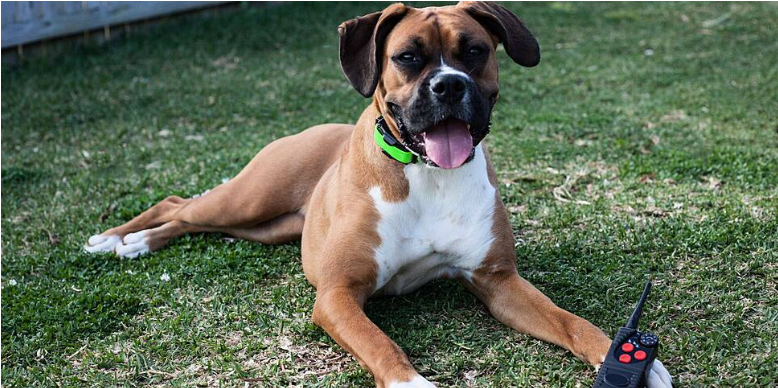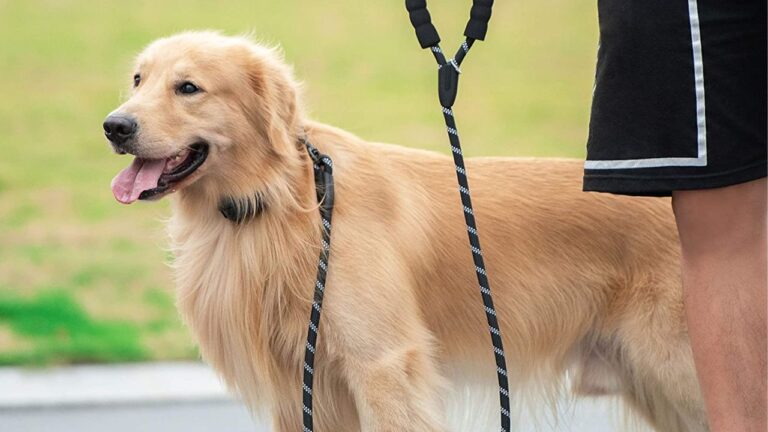Ireland has taken a significant step in animal welfare with the announcement of a shock collar ban in Ireland. The devices, often used to train and discipline animals, have been criticized for causing fear and anxiety in dogs. The decision, announced by Agriculture Minister Charlie McConalogue, comes after public consultation and aligns with similar bans across European Union countries.
Find the best dog collars for Dachshunds that accommodate their long bodies and prevent strain on their necks.
Blog Highlights
ToggleWhy Shock Collars Are Being Banned
Shock collars, controlled by hand-held remotes, deliver electric shocks to pets as a means of correcting behavior. While proponents argue they can be effective training tools, experts and animal welfare advocates highlight their detrimental effects.

Veterinary Perspective
Leading veterinary surgeon Donal Ryan from CityVet in Limerick welcomed the decision. Speaking on The Hard Shoulder, he expressed his relief and emphasized the harm caused by these devices.
“What I dislike about them is, the whole training and teaching of an animal is based on hurting them,” Ryan said. “It’s through fear really, and that’s not the best way to get the message across.”
Ryan pointed out that shock collars increase stress, anxiety, and fear in animals, impairing their ability to learn effectively. He added, “Animals don’t learn under those circumstances.”
Get insights into what is best for Dachshunds: a collar or harness for their safety, comfort, and health during walks.
The Problem with Shock Collars
Critics argue that shock collars rely on inflicting pain to control behavior, creating a negative experience for the animal.

Excessive Use
Ryan noted that some owners misuse the devices by shocking their pets repeatedly, likening it to a person pressing a remote control button when the TV channel won’t change.
“In that sense, they are inflicting pain on the animal to get it to do what they want it to do,” he explained. “I am dubious as to how effective it is; it may work very well in the hands of a very good trainer, but in many cases, it only teaches fear.”
What Will Remain Legal: Shock Fences
While shock collars are being banned, the use of electronic perimeter fences to keep pets within designated areas will remain legal. Ryan sees these as a more humane alternative.

A Useful Tool for Safety
Perimeter fences deliver a mild shock when pets approach the boundary, helping them learn to stay within safe areas. Ryan defended their use, noting their effectiveness in preventing accidents.
“If you bring a dog into me with a broken leg because it got out and was hit by a car, versus him getting a little shock and still having all four legs in one piece—it’s a no-brainer,” he said. “The whole purpose behind it is to train the animal to understand where the perimeter is and stay away from that area.”
To discover what activities bring joy to Australian Cattle Dogs, check out this detailed guide on What Do Australian Cattle Dogs Love.
Raising Awareness About Dog Training
Ryan emphasized the need for better education on responsible pet ownership and training methods. He highlighted the risks dogs can pose to the public if not properly trained, urging for common sense and caution. Here’s what you should know:
“The lack of common sense in these areas astounds me at times,” Ryan said. “Dogs can bite in the blink of an eye, and people need to be aware of that.”
A Shift Towards Humane Training Methods
The ban reflects a growing global shift toward humane training methods that prioritize the welfare of animals. Modern training emphasizes positive reinforcement—rewarding desired behaviors with treats, praise, or toys—over punishment-based approaches.
Positive Reinforcement vs. Shock Collars
- Positive reinforcement builds trust and strengthens the bond between pet and owner, leading to lasting behavioral changes.
- Shock collars rely on fear and pain, which can result in stress, aggression, and confusion.
Ryan encouraged pet owners to explore humane training techniques, noting that they are more effective and less harmful.
To find the ideal collar size for your Australian Cattle Dog, check out this guide on What Size Collar for Australian Cattle Dog for helpful tips on measurement and fit recommendations.
Shock Collar Ban in Ireland | Broader Implications of the Ban
Shock collar ban in Ireland follows similar measures in other European Union states, signaling a broader commitment to animal welfare. The regulation will take effect in the coming months, with existing users required to phase out the devices.

International Context
- Wales banned shock collars in 2010.
- England is considering similar legislation, supported by veterinary associations and animal welfare groups.
- Across the EU, member states are increasingly adopting stricter measures to protect animals from harmful training practices.
What’s Next for Pet Owners?
For those who currently use shock collars, the ban includes provisions for transitioning to alternative methods:
- Explore Positive Training Methods: Consult professional trainers to learn effective techniques that prioritize your pet’s well-being.
- Use Humane Alternatives: Consider tools like vibrating collars or clicker training to redirect unwanted behaviors.
- Educate Yourself: Understanding your pet’s needs and behavior is key to successful training.
Find out what color collar looks best on a Rottweiler to complement their bold appearance and highlight their unique features.
Conclusion: A Win for Animal Welfare
The shock collar ban in Ireland represents a significant victory for animal welfare advocates and a step forward in promoting humane training practices. By eliminating the use of devices that cause pain and fear, the country is prioritizing the well-being of pets while encouraging responsible ownership.
Learn what size collar for a Rottweiler is ideal by following this detailed guide to ensure a perfect fit for your dog’s comfort and safety.
As the regulation takes effect, pet owners have an opportunity to embrace training methods that foster trust, understanding, and mutual respect. The message is clear: animals deserve care and kindness, not fear and anxiety, in their journey to becoming well-behaved companions.








